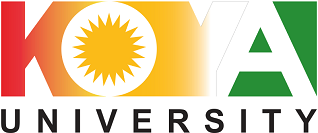Analysis of Protest Discourse in the Kurdistan Region
Education Teachers' Demonstration 2023, for Example
DOI:
https://doi.org/10.14500/kujhss.v8n1y2025.pp200-210Keywords:
Discourse, Language, Demonstrations, Protests, SlogansAbstract
Language functions both as a reflection of ideological beliefs and as a tool for formulation and competition within protests and demonstrations. By analyzing the language used in protests, we can gain insight into the underlying ideologies of demonstrations. "Analysis of Protest Discourse in the Kurdistan Region (The 2023 Education Teachers' Protest as an Example)" is the title of our research. Critical discourse analysis reveals all the hidden connections within discourse and its surroundings, positioning language as a powerful instrument for public influence. The significance of our research lies in analyzing demonstrators' language during the teachers' protest, relying on principles that reflected and played an active role in the demonstrations. Our research objective is to analyze the banners and slogans of oppressed teachers that were disseminated through various social media platforms such as Facebook, WhatsApp, Twitter, and Instagram. To achieve our objective, we employed a descriptive-analytical methodology. Data collection focused on teachers' protest expressions published across different social media platforms. During this research, we reached several significant conclusions worthy of consideration. Protesters utilized both visual and auditory language together in expressing their protests and demonstrations to clearly convey their message. They employed slogans as a peaceful instrument to demand their rights, as there exists a strong connection between the use of impactful language and emotions. The language of protesters' slogans carried expressions of both negative and positive emotions. Positive sentiment was notably reflected in the demonstrators' expressions, as they conveyed their demands using impactful words and phrases. These expressions reflected various meanings and emotions such as fear, threat, courage, determination, sadness, etc.
Downloads
References
حوسین، هێرش چهتۆ،(2016)، شیكردنهوهی نوكتهی كوردی بهپێی بنهمای هاریكاری،نامهی ماستهر، زانكۆی سۆران
دزهيى, عبدولواحيد موشير, (2011), زانستی پراگماتیك، چاپی یهكهم, چاپخانهی پاك, ههولێر.
السویدان، طارق،(2017)، و. مهریوان عارف عهلی، ڕێبهری وتاربێژی سهركهوتوو، چاپی یهكهم، ناوهندی ڕاگهیاندنی ئارا.
شەمس، هێمن عەبدولحمید ،(٢٠٠٦)، شێوازودەربرین لەبۆنە کۆمەڵایەتییەکان، نامەی ماستەر، کۆلیجی پەروەردە، زانکۆی کۆیە.
عثمان، ڕێبهرعمر، (2015)، ڕۆڵی پۆلیسی پارێزگاری چالاكییه مهدهنییهكان له كاتی خۆپیشاندانهكان، نامهی ماستهر، كۆلیژی ئهدهبیات، زانكۆی سهلاحهددین.
كساب، یاسر محمد سرحان، 2002، الهجرة الداخلیة الی مدینتی رام الله والبیرة، الرسالة الماجستیر، جامعة النجاح الوطنیة، نابلس-فلسطین
یاسای ڕێكخستنی خۆپیشاندان لهههرێمی كوردستان یاسای ژماره 11 سالی 2010)
ئیبراهیم، هاوسهر نهوزاد فهقێ، (2022)، دهنگسازیی بهرههمهێنان لهنێوان دهنگسازیی كێشناسی دهنگسازیی كهرتی دهنگییه خودكارییهكاندا، تێزی دكتۆرا، زانكۆی ڕاپهرین.
Crystal, D. (1997). Why a Global Language? In English as a Global Language (pp. 1-23). Cambridge: Cambridge University Press.
Edison Lanza .Special Rapporteur for Freedom of Expression,(2019), Protest and Human Rights, Title. III. Series. OEA/Ser.L/V/II CIDH/RELE/INF.22/19
Fairclough,Norman,( 1989),Language and power,London and NewYork, Longman.
Fasold,R.(1990),Sociolinguistics of Language, Oxford: Blacwell.
Goodson, P. (2010). Theory in Health Promotion Research and Practice: Thinking Outside the Box. Jones & Bartlett Publishers.
Mira Bekar,(2015), SPACE, LANGUAGE AND POWER: THE RHETORIC OF STREET PROTESTS, Социолошки преглед, vol. XLIX (2015), no. 3, стр. 337–348
Oxford Wordpower dictionary . ( 2010 ) . Oxford : Oxford University Press.
van Dijk ,T. A. ( 1988a ) . News analysis: case studies of international and national news in the press. Hillsdale, NJ: Lawrence Erlbaum.
van Dijk ,T.A. (1998). Ideology: A multidisciplinary approach. London: Sage Publications.
Van Dijk, T. A. (1991). Racism and the Press. London and New York: Routledge.
Wodak,R.,and Meyer,M.Eds.(2001) Methods of Critical Discourse Analysis, London: sage.
Downloads
Published
How to Cite
Issue
Section
License
Copyright (c) 2025 Talar S. Omar

This work is licensed under a Creative Commons Attribution-NonCommercial-NoDerivatives 4.0 International License.







